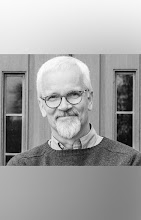 8 July, 2009. After breakfast we boarded the coach for Worms and Heidelberg praying together and singing “I greet thee who my sure Redeemer art.” When an hour and twenty minutes later we arrived in Worms, I attempted to put Luther and Calvin in context at the excellent Reformation Monument, t
8 July, 2009. After breakfast we boarded the coach for Worms and Heidelberg praying together and singing “I greet thee who my sure Redeemer art.” When an hour and twenty minutes later we arrived in Worms, I attempted to put Luther and Calvin in context at the excellent Reformation Monument, t he only statue, of which I am aware, that has ever been construct or composed like a hymn. We sang Luther’s great “A Mighty Fortress is our God,” later the chimes of a nearby church echoed Luther’s enduring melody, Ein Feste Berg. I read portions of letters Calvin wrote, first to his friend Melanchthon and the only one he wrote to Luther himself. “In the Church we must always be upon our guard, lest we pay too great a deference to men. For it is all over with her, when a single individual, be he whosoever you please, has more authority than all the rest.” Perceptive words from the quintessentially humble giant of the Reformation himself.
he only statue, of which I am aware, that has ever been construct or composed like a hymn. We sang Luther’s great “A Mighty Fortress is our God,” later the chimes of a nearby church echoed Luther’s enduring melody, Ein Feste Berg. I read portions of letters Calvin wrote, first to his friend Melanchthon and the only one he wrote to Luther himself. “In the Church we must always be upon our guard, lest we pay too great a deference to men. For it is all over with her, when a single individual, be he whosoever you please, has more authority than all the rest.” Perceptive words from the quintessentially humble giant of the Reformation himself..JPG)
April, 1521, Luther arrived in Worms in answer to an imperial summons. The diet (court) convened at the bishop’s palace, now a garden near the southeast corner of the Romanesque cathedral, built between 1125-1181. We talked about the interplay of Frederick the Elector of Saxony, Luther’s patron, and the role of Phillip of Hesse in supporting the progress of reformation in the vast and disunified German dukedoms. Here Luther took his memorable stand before the young emperor, Charles V, who declared him a heretic, rendered variously, “Unless convinced by Holy Scripture and clear reason, my conscience is captive to the Word of God, I will not and cannot recant. God help me, here I stand, I can do no otherwise.” From Worms, Frederic the Wise, wisely wisked Luther away to the Wartburg Castle and safety. In his year of exile, Luther translated the German New Testament, wrote a German catechism, wrote hymns, worked on sorting out the order of Lutheran worship, and more—a good year’s work!

Lest some imagine this is Luther and German Reformation territory and so why visit it on the Calvin at 500 Tour, let me explain. While preaching and teaching in Strasbourg from 1538-1541, Calvin was made a delegate of the city and sent on her and the Gospel’s behalf to the city of Worms. The monument includes a large round relief of Calvin at the feet of Luther and to his left. Forerunners of Reformation, Hus, Savonarola, Waldo, and Wycliffe, are depicted in seated bronze surrounding Luther. Madgeburg weeping is a sobering symbolic statue of a grieving woman, reminiscent of the horrors of 1631 when HRE troops forced 3,500, mostly women and children, into the parish church and set it aflame, tossing live infants into the inferno through the stained glass windows.
After some of us visited the Maguskirke, near the cathedral, the oldest Lutheran protestant congregation at least in this region of Germany (already preaching justification by faith before Luther arrived in 1521), we had a bite of lunch and set of to Heidelberg.



























No comments:
Post a Comment